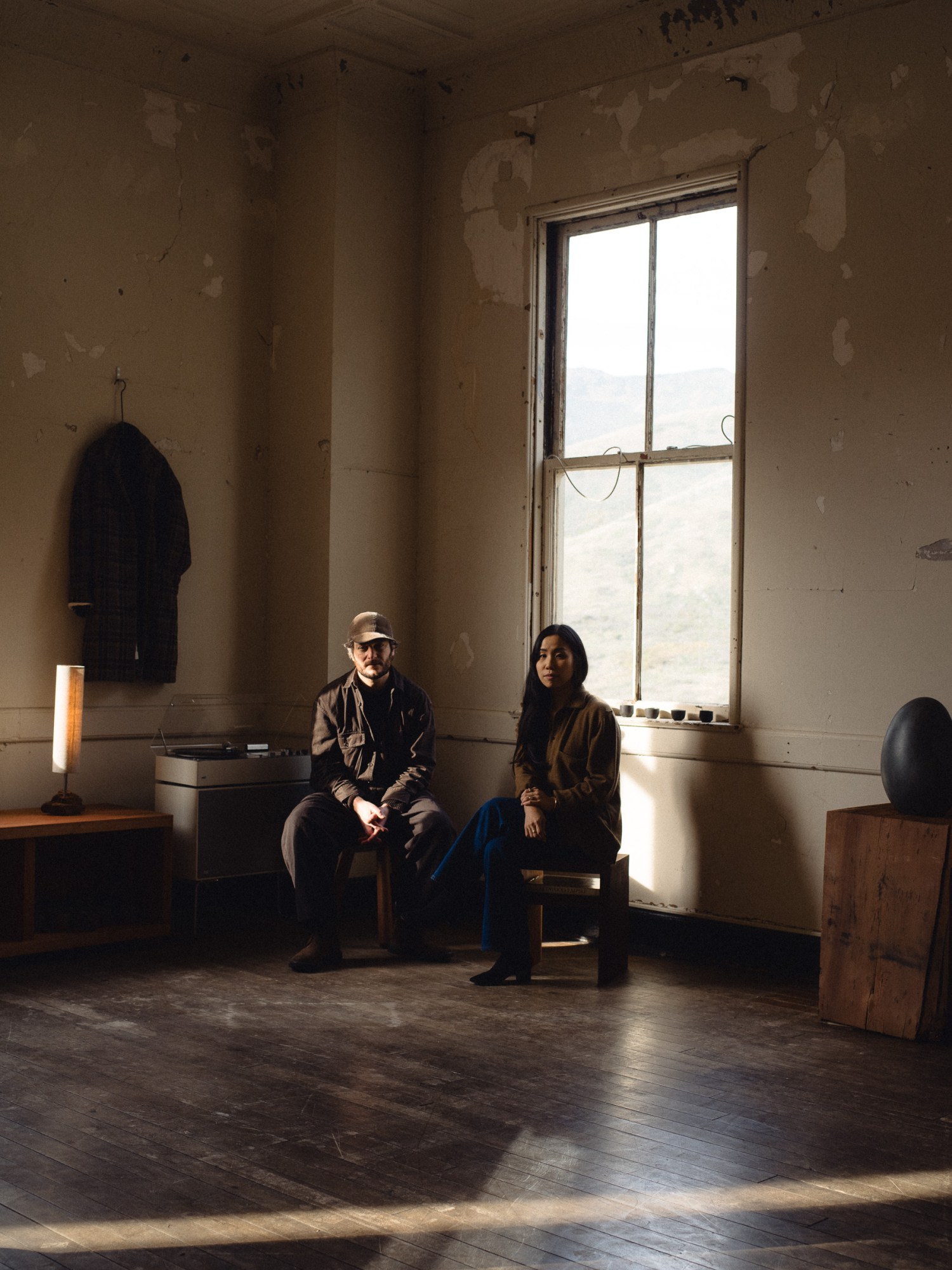“We’re in the middle of, like, straight nature,” Evan Kinori, the cult menswear designer tells me over FaceTime, angling his computer screen so I can get a glimpse of the rolling hills just outside the window. Kinori is beaming in from the bright, airy Eastwing of the Headlands Center for the Arts, just a 45 minute cycle (or fifteen minute drive) north of San Francisco, a trip he often likes to take. “It’s so close, we hike up here and walk the trails and stuff,” he explains, “I feel very at home.”
It’s the morning after his new exhibition, headlands, opened at the Center for San Francisco art week. This is the second temporary show Kinori has hosted (the first was in May 2024 at JDJ gallery in New York) that orbits a new collection of furniture work, alongside a selection of his clothing and, for the first time, a small curation of other art and craft assembled by himself and co-curator Rosa Park. Park, a “super kick ass fucking very cool lady,” runs Francis Gallery, a contemporary art gallery focusing predominantly on artists with a keen interest in process and material, much like Kinori himself. Alongside the objects, San Francisco institution William Stout Architectural Books have provided a selection of must-reads (or buys) for the weekend to be enjoyed on Kinori’s new sofa design.
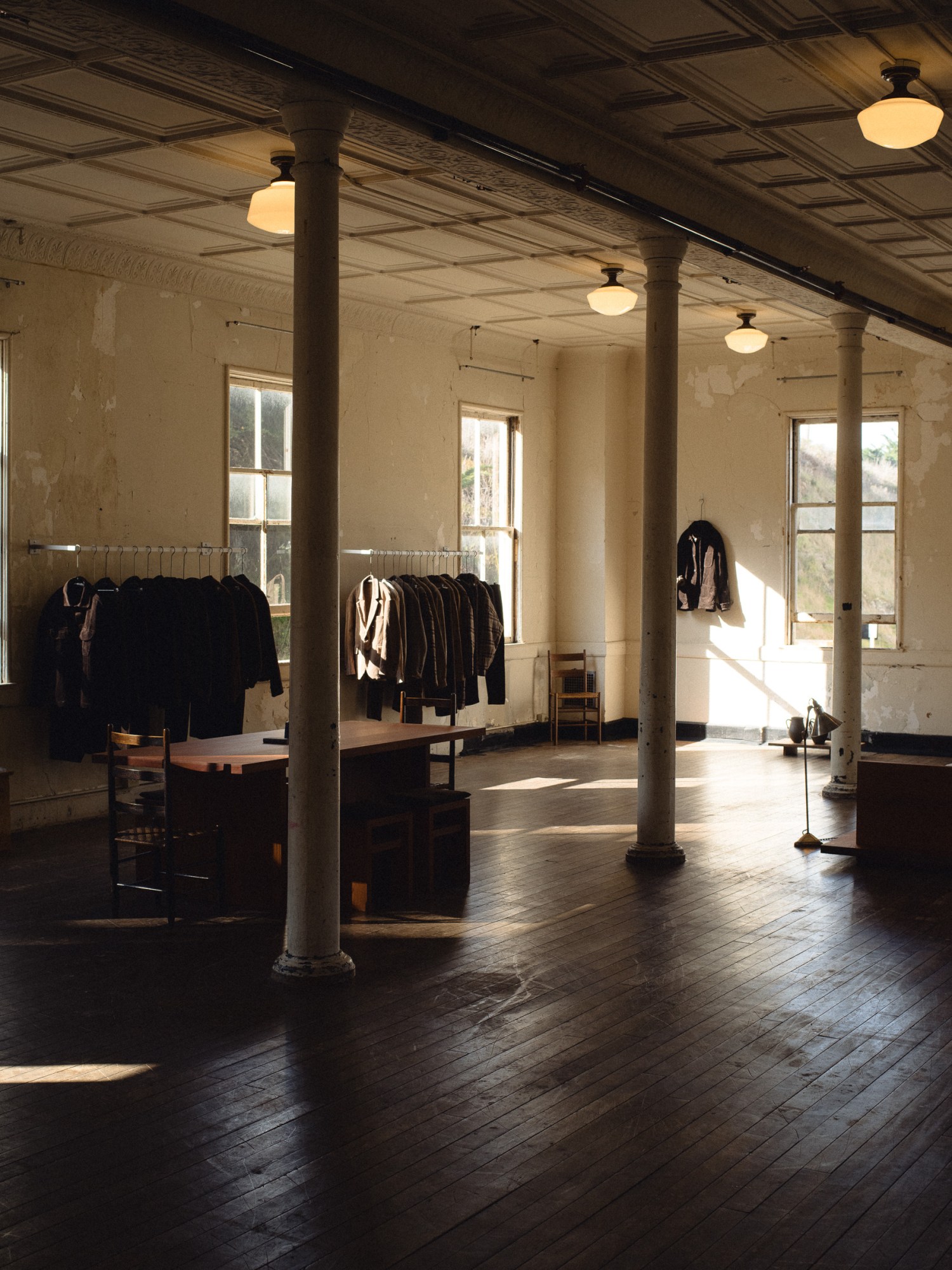
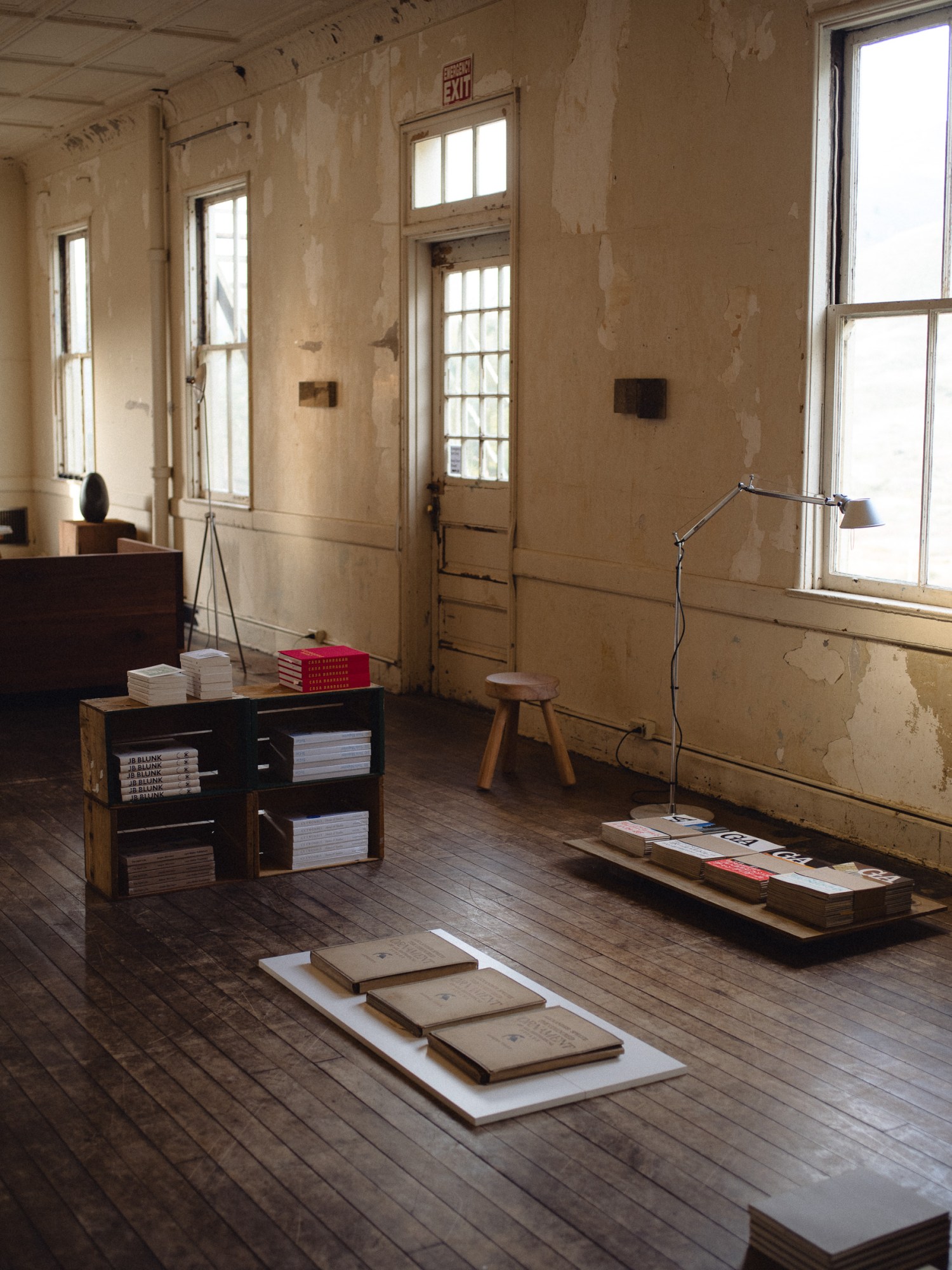
The Center, originally a military complex built in 1907, is located in the Golden Gate National Recreation Area, a landscape dominated by big nature, made up of grasslands, scrublands, wetlands and forests with the biodiversity to match. In the 1980s, the abandoned military buildings were taken over by a handful of artists, most notably sculptors David Ireland and Ann Hamilton, whose approaches to material and form are echoed in Kinori’s own work. It’s a fitting scene for the designer, known for his simple, yet considered, shapes and raw, earthen textiles. Ireland was in charge of renovating the Eastwing, stripping the room back to its very bones, blasting layers of paint, paper and time from the walls and floors and rendering the room itself a skeletal representation of the building’s own history. It’s in this room, with its peeling walls and dark, wooden floor, that Kinori now sits on FaceTime waiting for visitors to arrive.
“If you want to buy clothes, you can, but if you want to come and read a book, listen to a record or just look out at the view, you can,” Kinori explains. “You can just spend half an hour here—yes, commerce can happen here but that’s not the end goal, or at all intrinsic to the experience.” Sake cups sit alongside art books, painting, furniture, and clothes. Whilst all is available to buy, the exhibition is aimed more at holding space, where visitors can come and use the gallery as they please. “I’ve tried to figure out how I can make it so that ‘pop-up’ is the last word on people’s minds.”
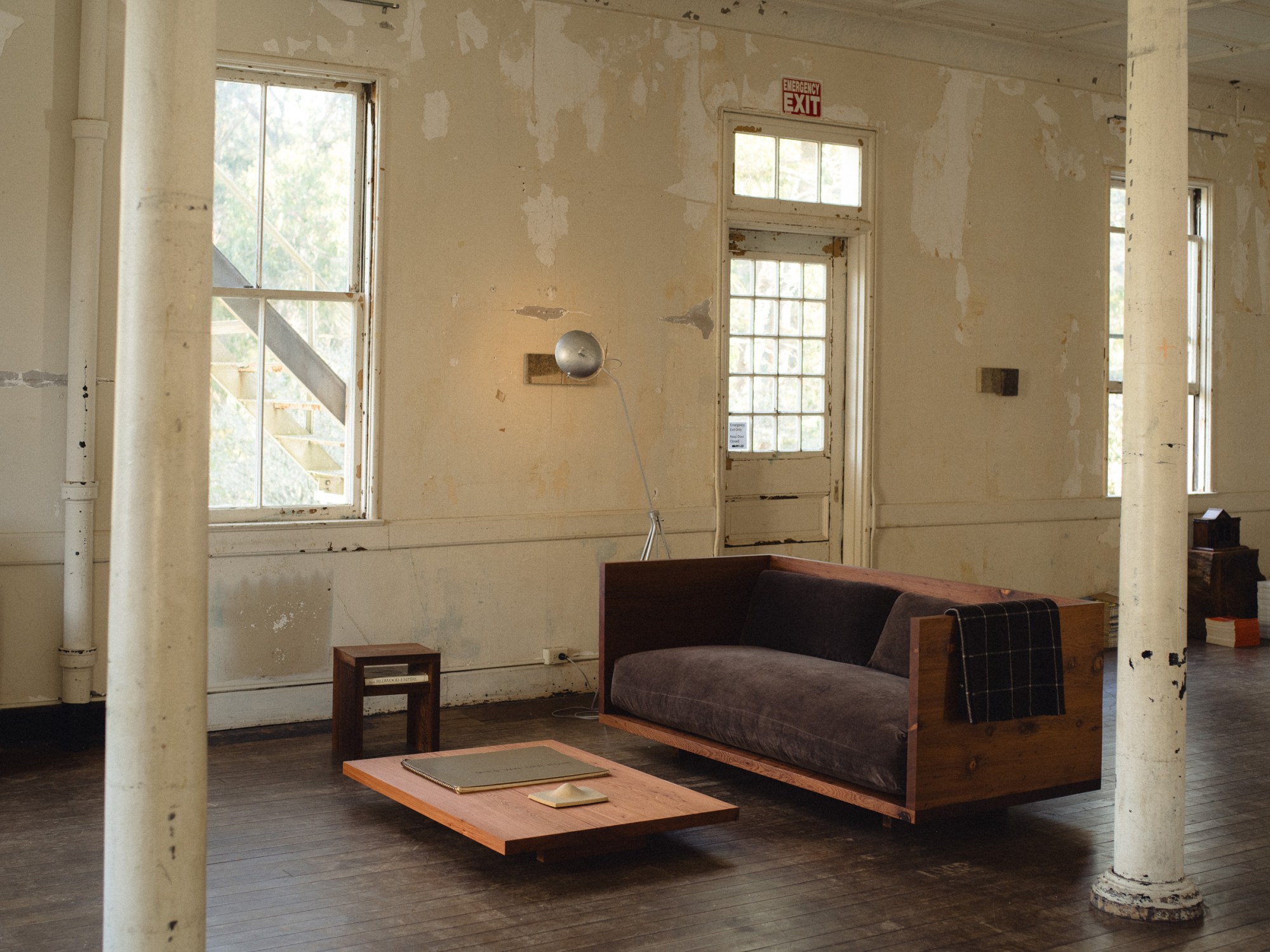
Amongst the artisans showing work are local friends, such as the weaver and Kinori’s studio-mate Marina Contro and ceramicists Johnny Ortiz Concha aka Shed Project and Thylda Palmese, while others are artists admired by Kinori from afar, such as Nancy Kwon and Jamesplumb. A few names added by Park, such as Masao Kozumi, Berend Boorsma, Mari-Ruth Oda and Paul Philp, were previously unknown to Kinori before the exhibition. All have a distinct interest in material and form, as well as a complementary colour palette. A preoccupation with material and form ties the objects in the exhibition together. “I like when the thing itself is boiled down to its essence,” Kinori explains.
Kinori’s new collection of furniture is much the same shape as his last: a Judd-esque cubiform sofa, bed, coffee table, and shelves. This time, instead of being built in elm, however, they’re rendered in salvaged old growth redwood, the epic trees that have grown on the California coastline for millennia, and would have once upon a time covered the headland the exhibition takes place upon. When ancient trees come down in storms or accidents, there’s a tradition of salvaging the wood for domestic use. His friend Sam Lillestol, a local carpenter, makes all pieces to order from this salvaged wood, just an hour from Kinori’s own studio.
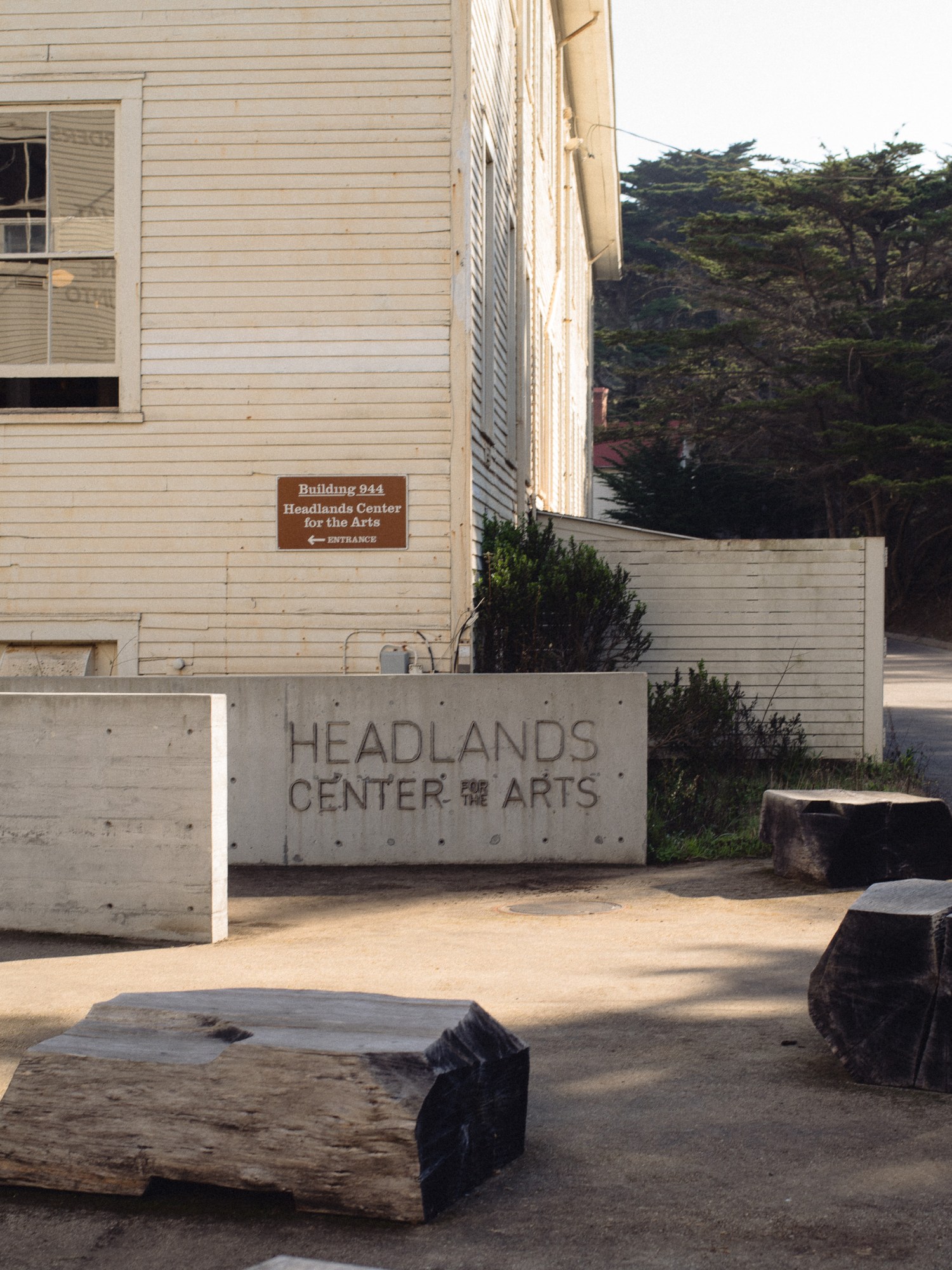
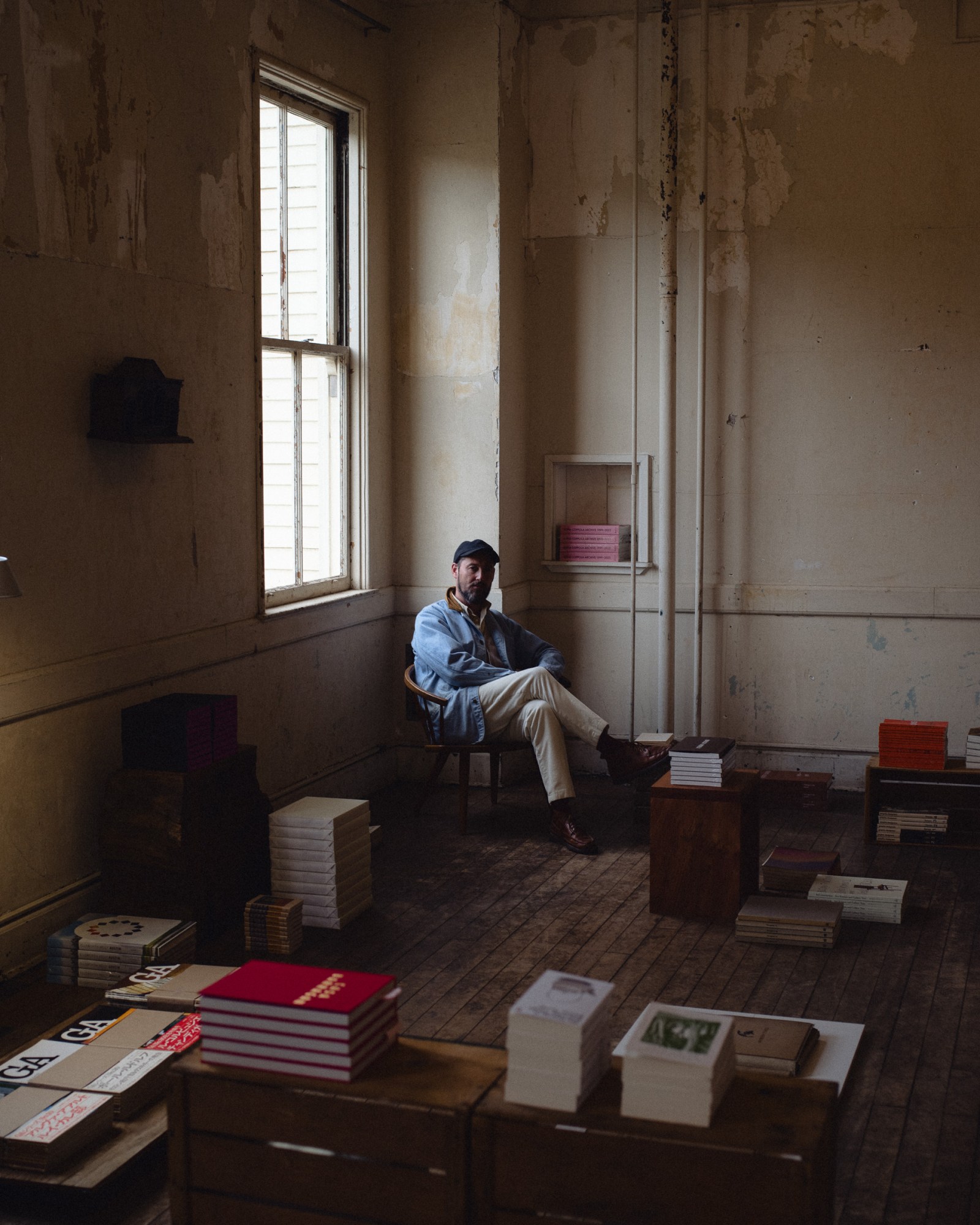
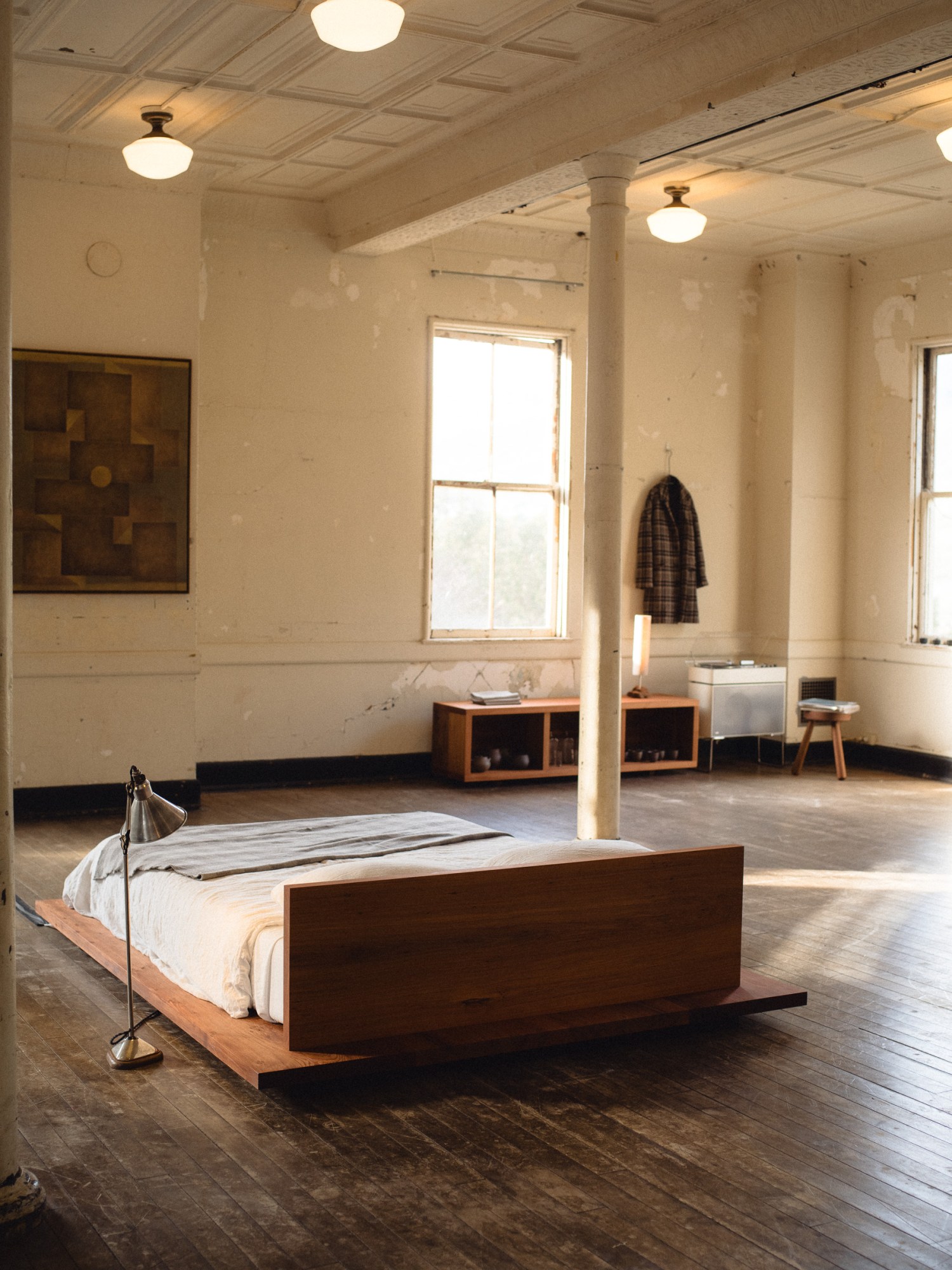
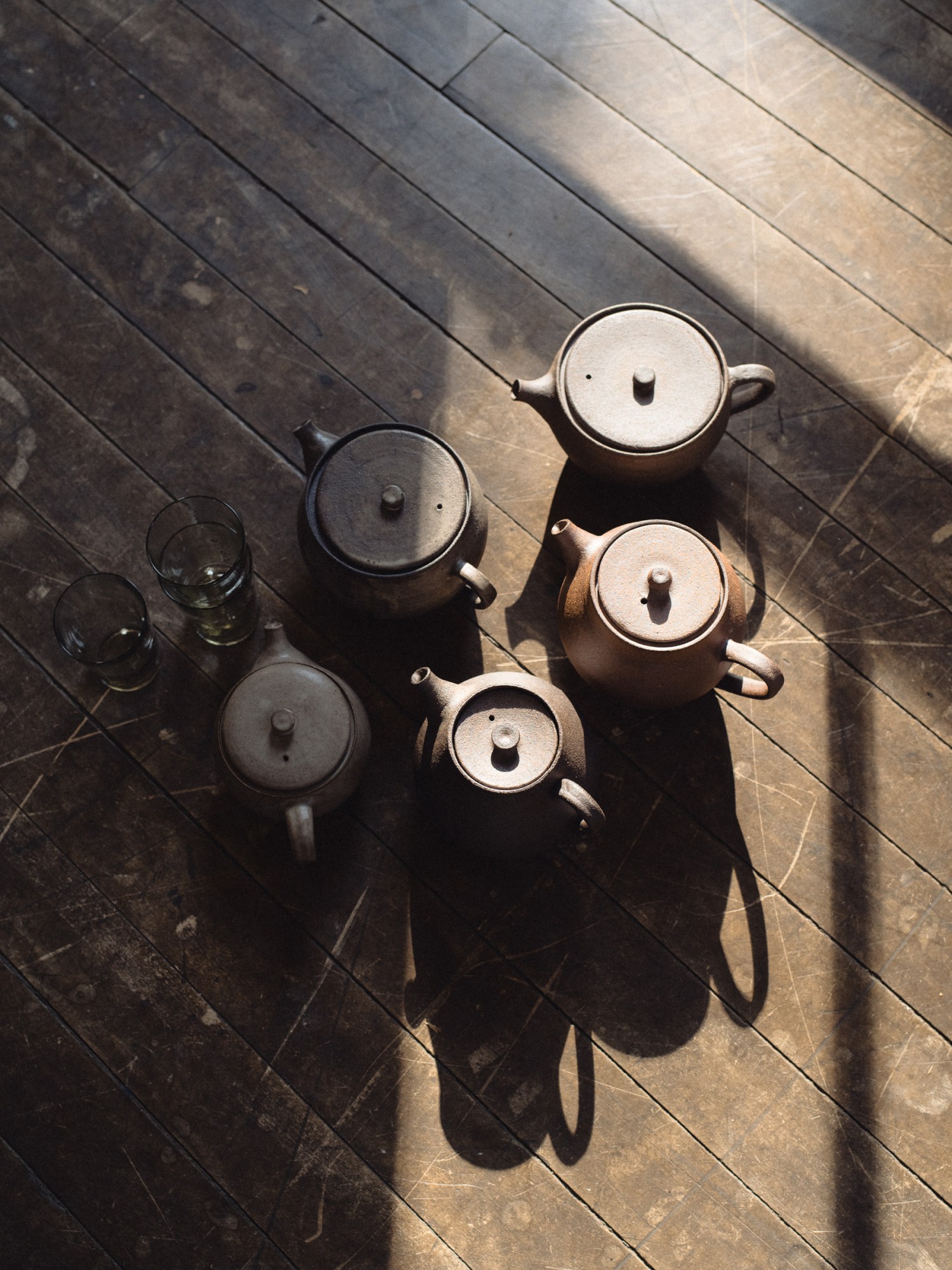
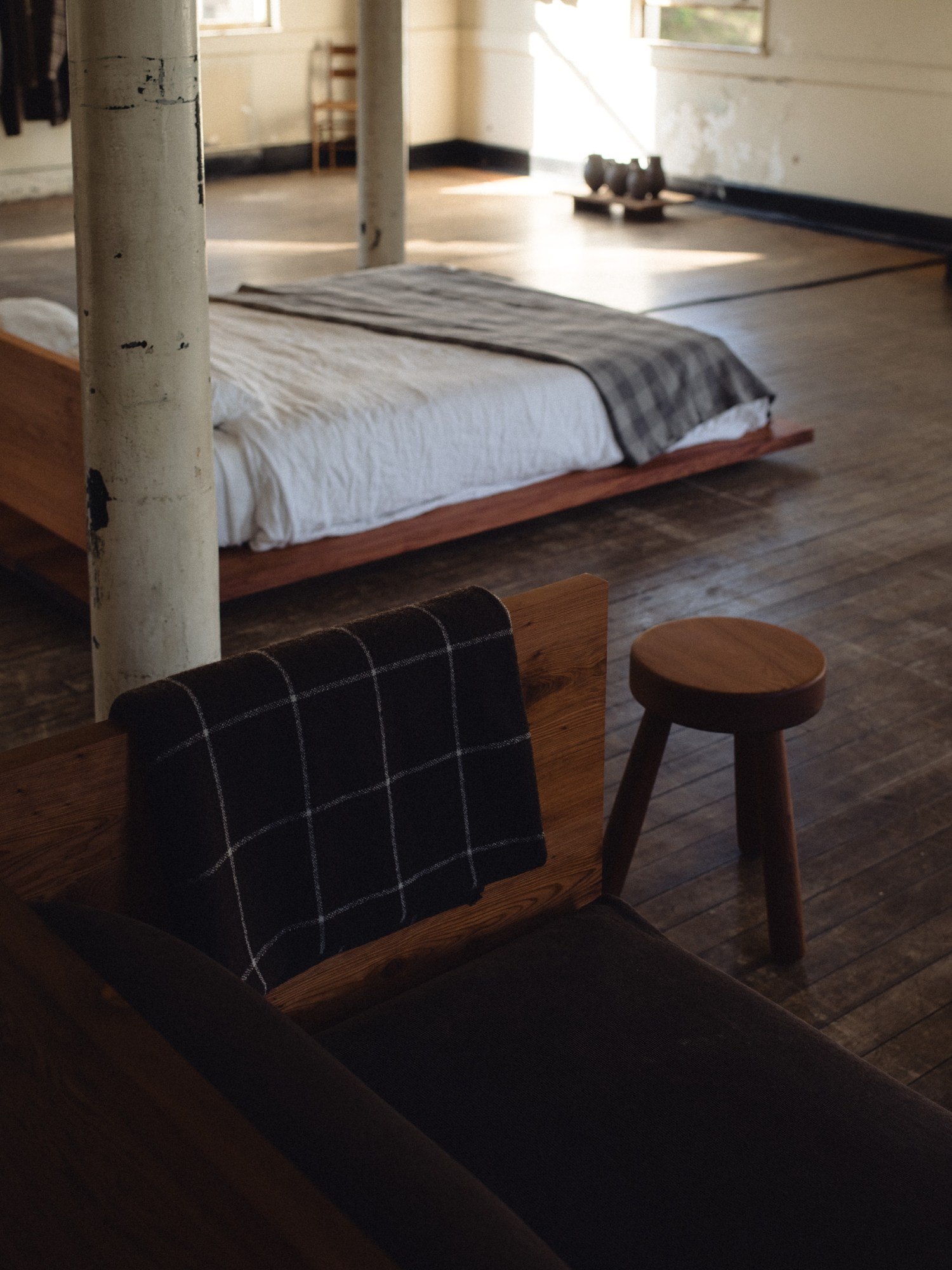
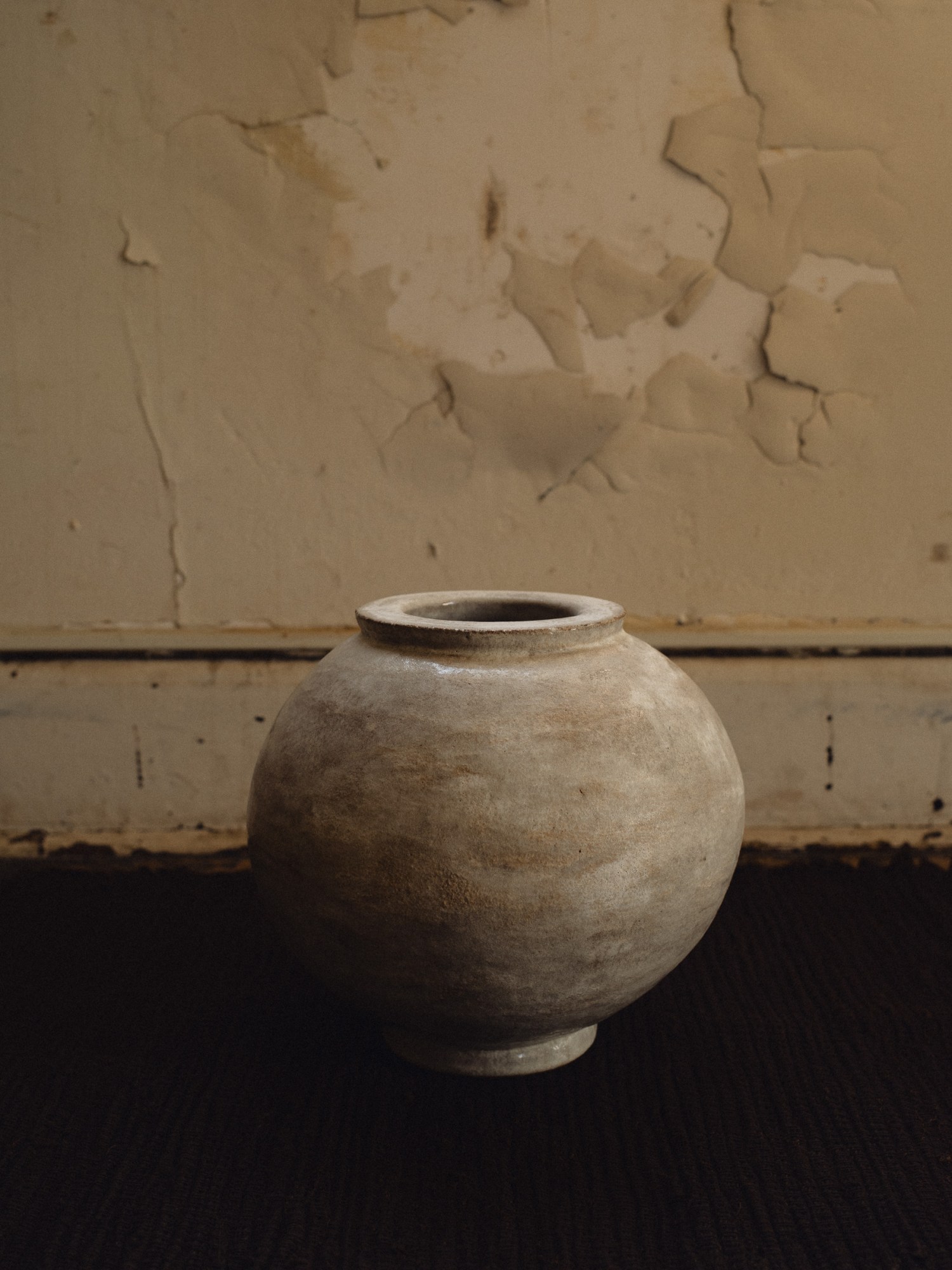
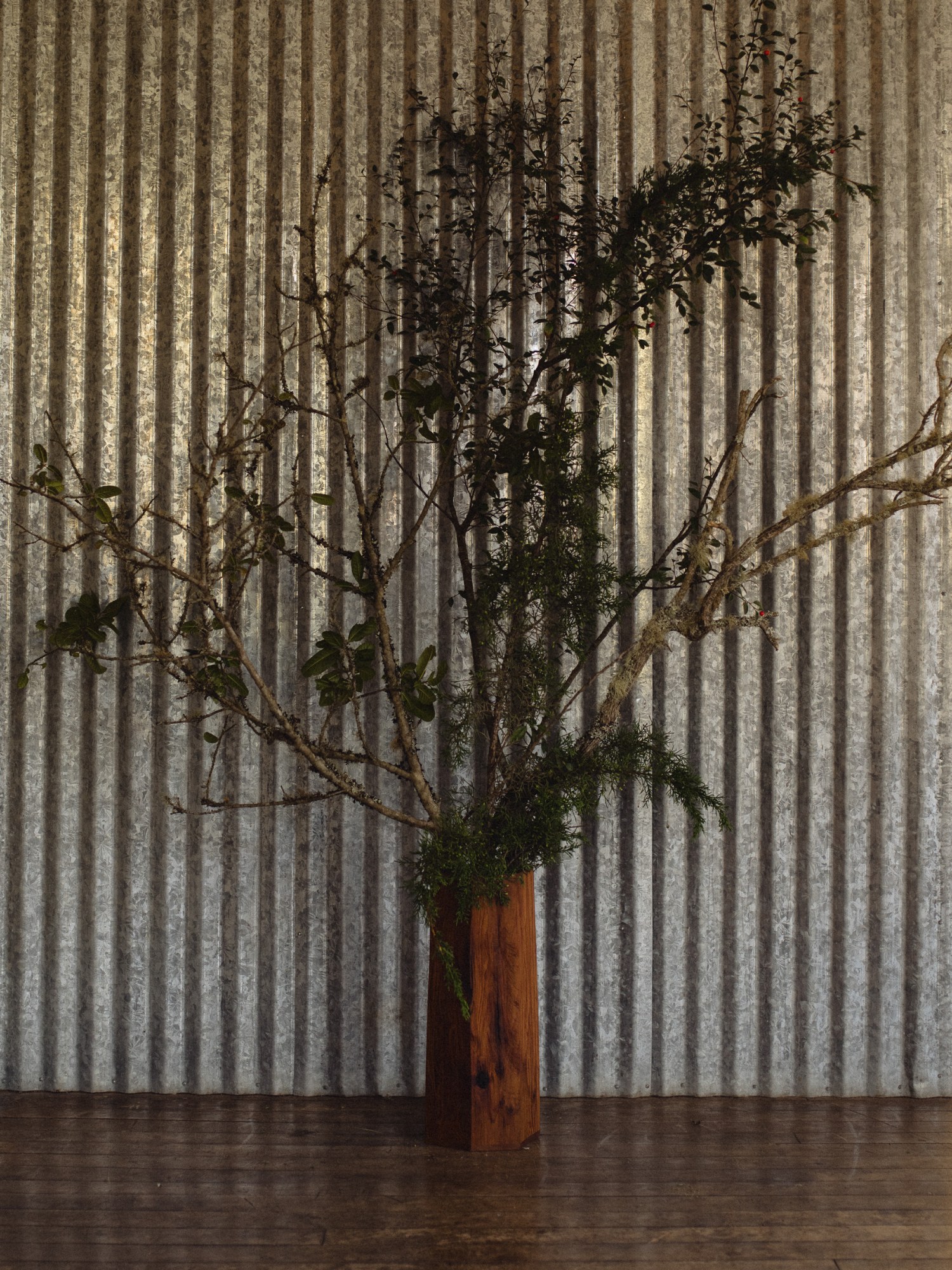
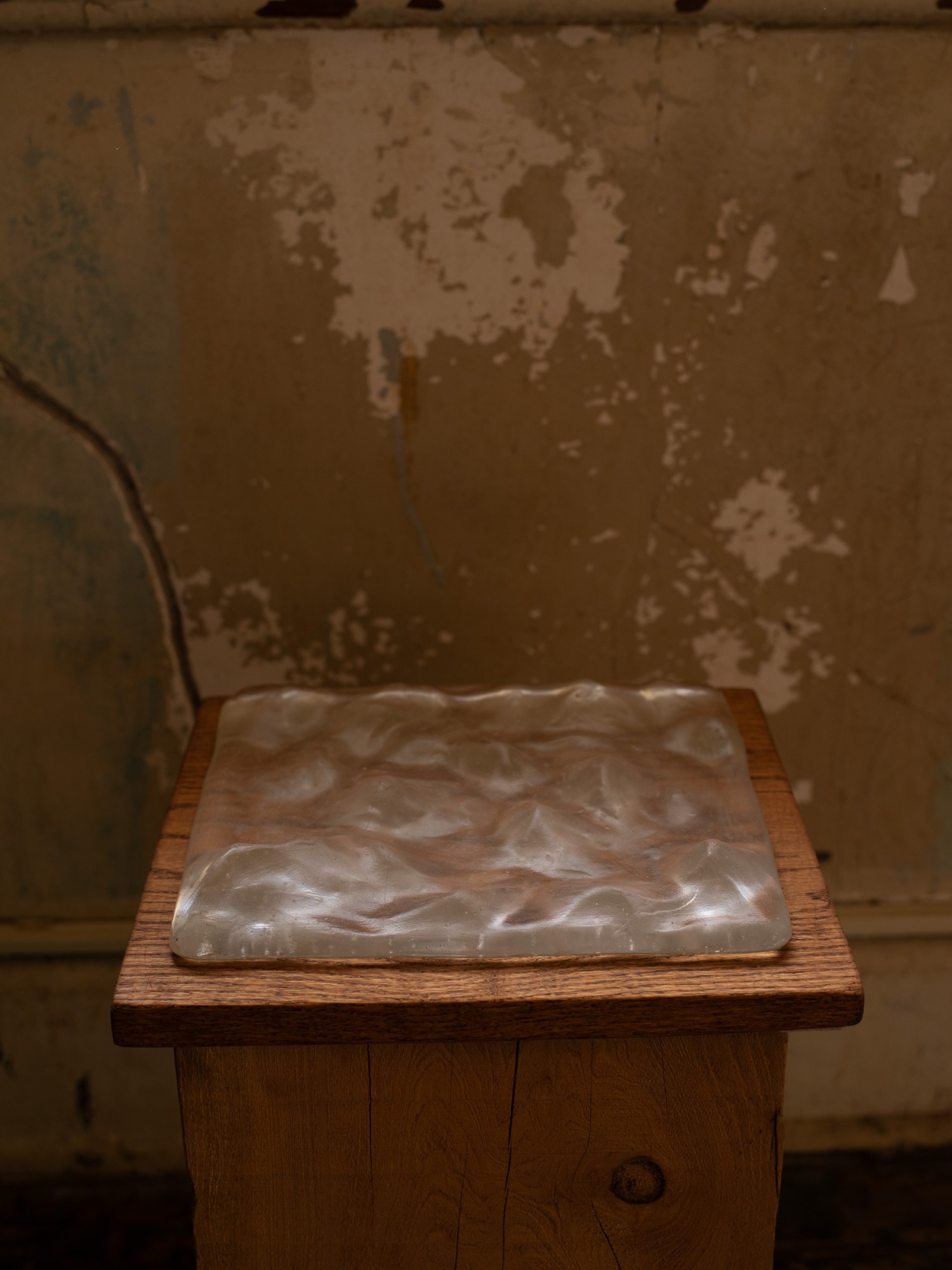








To round off the weekend there’s a performance by composer Stuart Bogie. Guests were invited to sit on the floor as the dulcet tones of Bogie’s clarinet filled the space whilst twilight set in. “[It was] really special to watch behind Stuart out the window, as it went from day to night,” Kinori tells me a few days later. Bogie, who composed a piece specifically for the exhibition, had visited Kinori’s shop in San Francisco a few months earlier and jumped at the chance to perform. “It’s an amazing atmosphere to linger in,” Kinori explains. Much like the other artists in the exhibition, a shared approach brought them together. “Sometimes it just works.”
